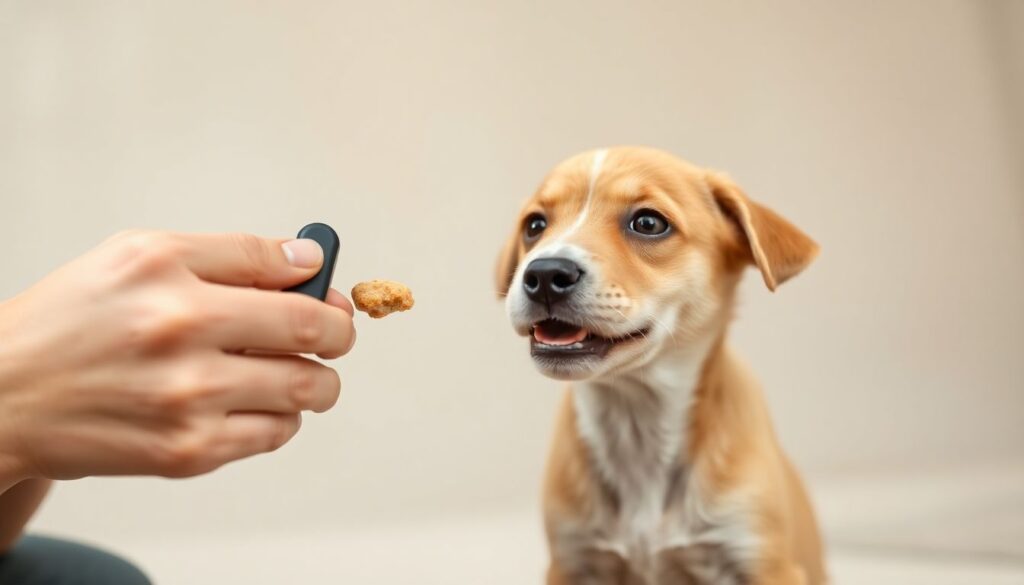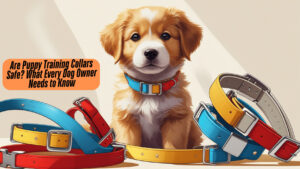Clicker Training for Puppies: A Step-by-Step Guide to Success
Positive reinforcement is a powerful tool in puppy training. Clicker training effectively shapes behavior by rewarding desired actions. This method makes learning fun and engaging for your puppy. Following this guide will help set you on the path to successful clicker training.
The Allure of Clicker Training for Puppies
Clicker training uses a distinct sound to signal to your puppy that they did something right. This sound creates a clear connection between the action and the reward. Puppies quickly grasp what’s expected of them when you use this method.
Why Clicker Training Trumps Traditional Methods
Traditional training often relies on shouting or using physical corrections. This approach can lead to fear or confusion. In contrast, clicker training encourages a positive atmosphere. It builds trust between you and your puppy, leading to stronger bonds.
Setting Realistic Expectations and Goals
It’s crucial to set achievable goals during training. Recognize that all puppies learn differently. Some may pick up commands quickly, while others might take longer. Be patient and adjust your training pace as needed.
Getting Started: Choosing Your Tools and Setting the Stage
Before you begin training, gather your tools. The right gear will enhance your success.
Selecting the Right Clicker
Choose a clicker that feels comfortable in your hand. Look for one that produces a clear, consistent sound. Some clickers have adjustable volume, which can be helpful in different environments.
Creating a Positive Training Environment
Pick a quiet place free from distractions. A calm setting allows your puppy to focus. Ensure your puppy feels secure and relaxed to maximize learning.
Preparing High-Value Rewards
Use treats your puppy loves. High-value rewards can include small pieces of chicken, cheese, or special dog treats. These snacks should be easy to eat quickly so your puppy stays focused.

Teaching Your Puppy the Clicker
Once you have your tools, it’s time to teach your puppy about the clicker.
Associating the Clicker with a Treat
Begin by clicking and immediately giving a treat. This helps your puppy learn that the clicker means something good. Repeat this several times until your puppy shows excitement at the sound.
Gradual Introduction of the Clicker
Once your puppy is familiar with the clicker, start using it when they engage in a natural behavior you want to reinforce. For example, if they sit on their own, click and reward immediately.
Timing is Everything: Click-Treat Consistency
Ensure you click at the exact moment your puppy does the desired behavior. Delayed clicking can confuse them. Consistency helps your puppy learn faster.
Building Basic Commands with Clicker Training
Now, you can begin teaching your puppy basic commands using the clicker.
Teaching “Sit” Using the Clicker
- Hold a treat above your puppy’s head.
- Move the treat back toward their tail. This encourages them to sit down.
- As soon as they sit, click and reward.
- Repeat until they understand the command.
Training “Stay” with Positive Reinforcement
- Ask your puppy to sit.
- Show your palm towards them and say “stay.”
- Take a small step back. If they stay, click and reward.
- Gradually increase the distance and time before clicking.
Mastering “Come” Through Clicker Training
- Use a leash in a safe area.
- Call your puppy to come to you.
- Once they start moving towards you, click and reward.
- Practice until your puppy reliably comes when called.
Troubleshooting Common Clicker Training Challenges
Training may not always go as planned. Here are some common issues and how to address them.
Addressing Attention Issues
If your puppy seems distracted, try a different location or time. Keep sessions short and engaging. Puppies have limited attention spans.
Handling Distractions During Training
Train in a quiet area before introducing distractions. Gradually increase the level of distractions as your puppy improves. This builds their focus over time.
Overcoming Reluctance to Respond to the Clicker
If your puppy ignores the clicker, ensure the treats are enticing. You may need to go back to associating the sound with a reward before resuming training.
Expanding Your Clicker Training Arsenal
Once your puppy masters the basics, consider expanding training techniques.
Incorporating Hand Signals
Combine hand signals with verbal commands. This helps your puppy learn to associate gestures with actions. It’s especially useful in noisy environments.
Integrating Verbal Cues
Use clear verbal commands alongside the clicker. Be consistent with your wording. This reinforces what you want them to do.
Advanced Clicker Training Techniques
As your puppy becomes more skilled, introduce more complex commands. Consider trick training, like “roll over” or “play dead.” This keeps training fun.
Conclusion: Reaping the Rewards of Clicker Training
Clicker training is an effective way to teach your puppy. It strengthens your bond and makes learning enjoyable.
Key Takeaways and Success Strategies
- Use a clicker to bridge the gap between action and reward.
- Keep sessions short and engaging.
- Monitor distractions and adjust your environment.
Long-Term Benefits of Clicker Training for Your Puppy
Trust and communication will grow between you and your puppy. They’ll become more responsive, making daily life easier and more enjoyable.
Resources for Continued Learning
Consider books or online courses on positive reinforcement training. Communities and forums can also provide support and tips.
Embrace the journey of training your puppy with clicker methods. The payoff will be a well-behaved, happy companion.




One Response
Thank you for explaining very well. My Boston Puppy will be 6 months old August10. I have been reluctant to try the clicker method because I “can’t walk and chew gum at the same time” … I rarely multi task … but I am determined to give this a go. Luna is SO wonderful (and boisterous). She deserves this and we will thrive together. THANK YOU